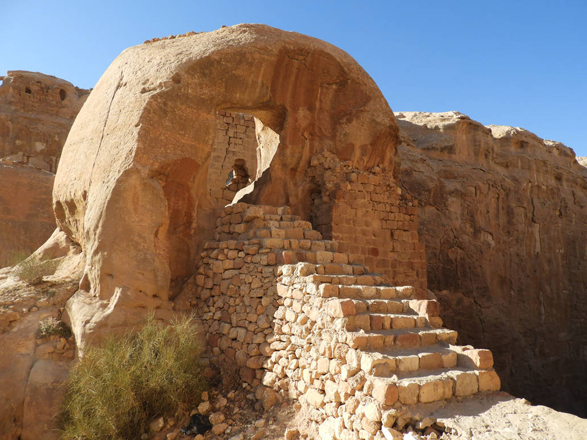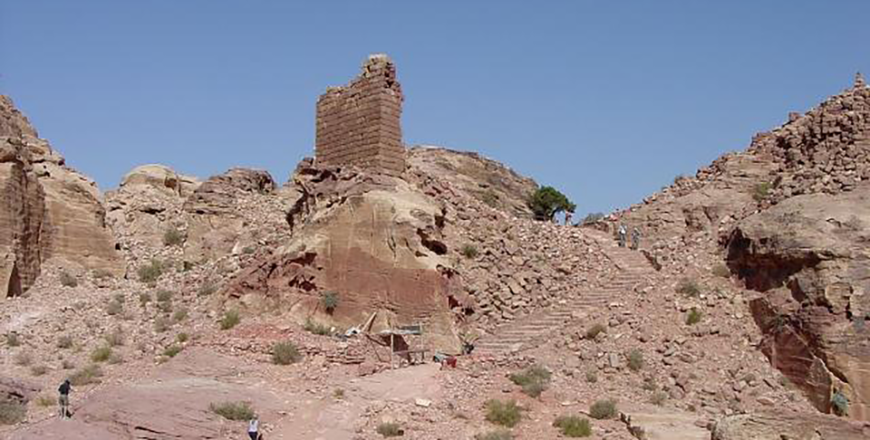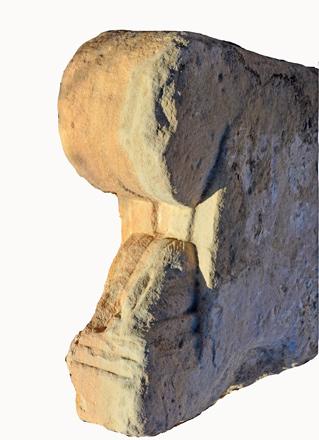You are here
Nabataean legacy: deep dive into ancient water systems
By Saeb Rawashdeh - Aug 06,2024 - Last updated at Aug 06,2024

The fortified gate of the crusader castle Wuayra in Wadi Musa, surrounded by steep cliffs (Photo of BricksandStone)
AMMAN — Petra is located in a very arid area of Wadi Musa and its inhabitants had to use all kinds of technical skills to harvest and preserve water from seasonal rains in order to irrigate crops and preserve drinking water. Water is rare in regions like Petra so ancient Nabataeans constructed water pools and reservoirs that were very useful in dry summer months.
University of Florence studied for many decades not only Crusade castles in Jordan, but also how the European presence in Petra, Karak, and Shobak affected the local population and what technological innovations had been exchanged between these civilisations.
One of such spots is Wuayra, a Crusade stronghold in Petra, which in Arabic means "a place with difficult access".
Shallow rock-cut channels were used from the Nabataean occupation of the site to direct water from the rain into small cisterns, and the longest channel runs for 50 metres from the hilltop to towards the slope.
"At the moment, we have no plausible interpretation for such structures but it is almost clear that they were not intended for utilitarian purposes. The channels sometimes start close to small cylindrical water reservoirs with which they don't form physical connection," said the scholar Andrea Vanni-Desideri from the University of Florence, adding that in this case it is possible that water was simply drawn from reservoir and poured into the channel producing a weak flow with more of symbolic function.
Wuayra is also known for its monastic/hermitic settlements.
"The reconsideration of the archaeological data gathered up until now, together with the new data coming from the archaeological reading of the area outside the castle, has led to a better knowledge of the pre-crusader period," noted Vanni-Disideri, adding that major results include the identification of a rupestrian chapel with an extraordinary sculptured seat leg among its furniture, a number of rock-cut cells rearranged out of earlier structures or purposely dug into the sandstone, and the remains of a water-powered cableway.
Because of these results, the current interpretation of the topography and the function of the site in early medieval times had to be reconsidered and the new hypothesis is that the site was a monastic-hermitic settlement including a coenobium, corresponding to the later crusader castle keep, surrounded by a number of hermitic cells (laura), provided with a rupestrian chapel, the professor underlined.
"This interpretation helps to explain more clearly the reason why the crusaders settled on this spot and the modality and substance of the structural modifications they performed. Their occupation could have taken advantage of an already organised and in some way fortified Christian monastery," Vanni-Desideri said, noting that the crusaders, while keeping in use some of the monastery structures, including the rock-cut chapel, which certainly underwent some transformations, simply had to add some buildings to the already extant ones, i.e., a larger church, the northeast and west towers, and, to the north, the curtain wall provided with arrow slits.
This new light makes clearer the chronology of the southern water cistern (the technical features of which have a Byzantine character, such as the plaster with inset potsherds), the wall of the entrance tower, and the curtain wall flanking the gate, which shows a different building technique from the actual crusader buildings.
Therefore, crusaders came to Petra and discovered already used Byzantine system which they refined.
"Starting from this new interpretation and the subsequent need for a better comprehension of this phase, a new programme of survey and study of the various kinds of hermitic installations around the town was planned, in order to contextualise the early medieval settlement of Wuayra into the monastic/hermitic landscape of Christian Petra," the professor underscored.
Related Articles
AMMAN — During Baldwin I (1100-118), Crusaders built a fortress Al Wu’ayra inside Petra and the stronghold was part of the same network of c
AMMAN — The crusader castle Al Wu'ayra at Petra once was an early mediaeval chapel and even had a “hydraulic cableway” for transporting mate
AMMAN — From an archaeological and historical point of view, two features are the most important for the site: its isolation and its long-la














